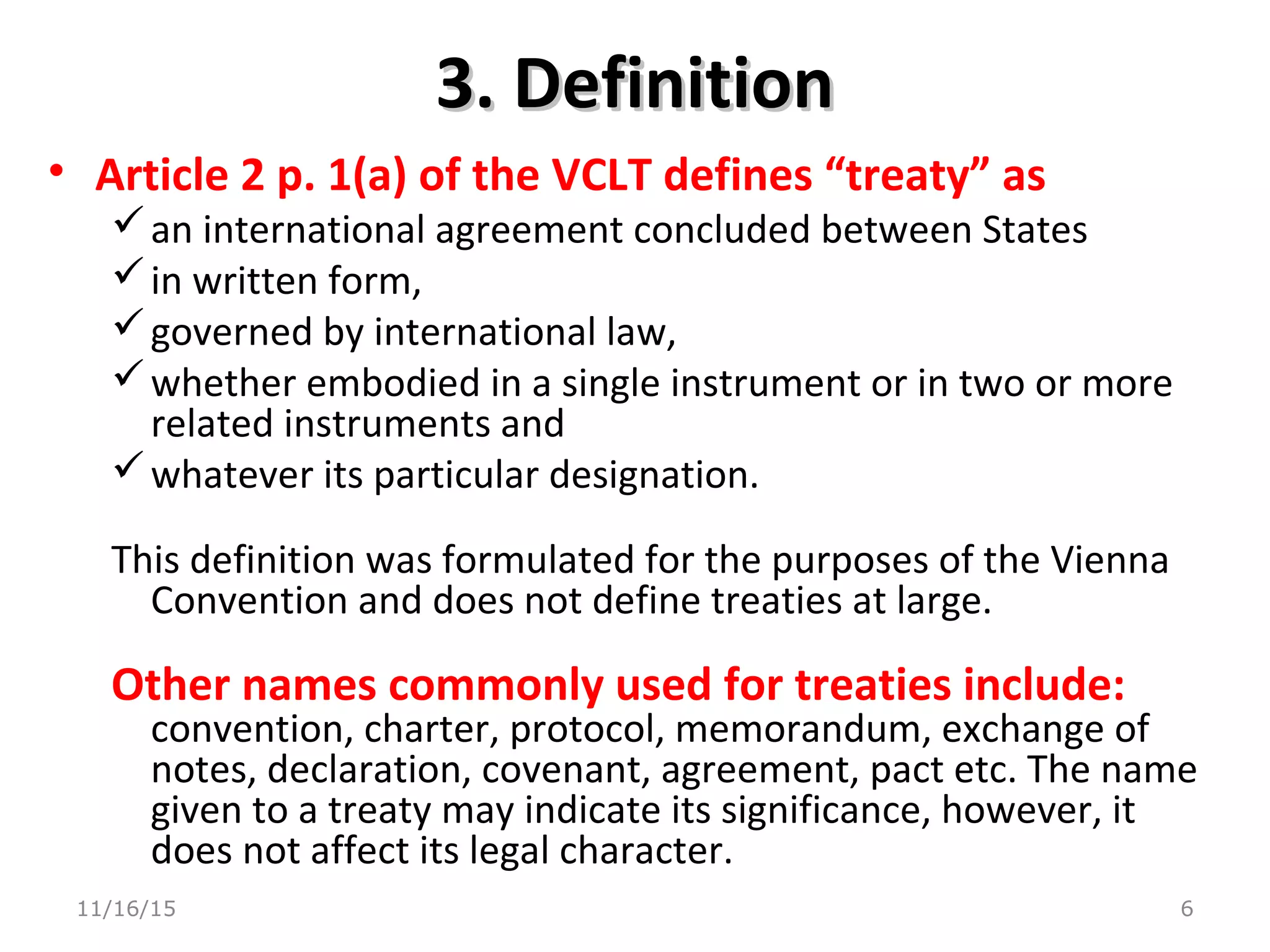The document discusses public international law with a focus on the law of treaties, outlining key aspects such as the codification of treaties via the Vienna Convention, definitions, types of treaties (bilateral, multilateral, universal), and various instruments like protocols and agreements. It explains the legal significance and implications of treaties in regulating state behavior, establishing international rights and obligations, and their role in the enforcement of international law. Additionally, it highlights how treaties can facilitate international relations and economic cooperation among nations.










































